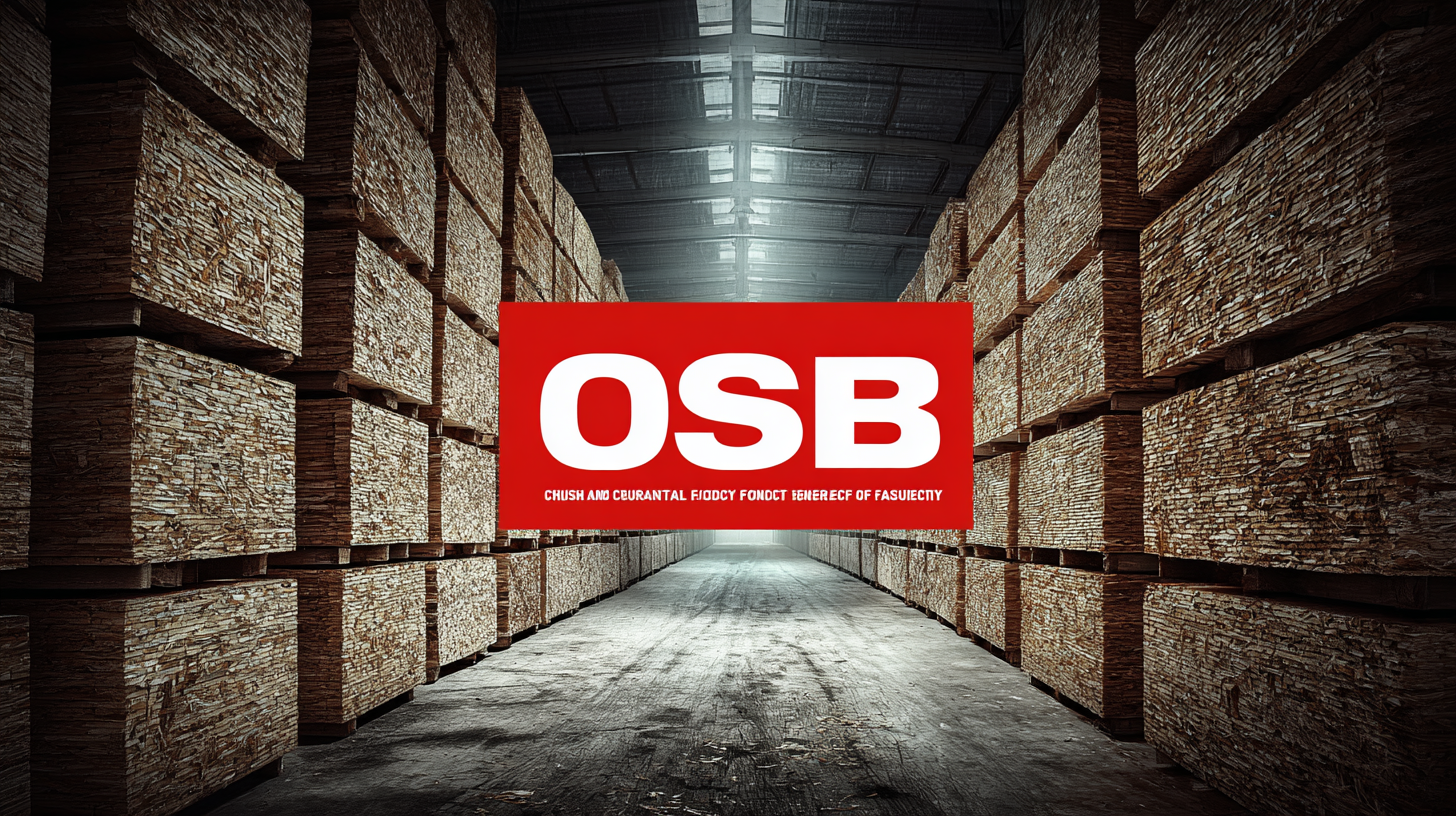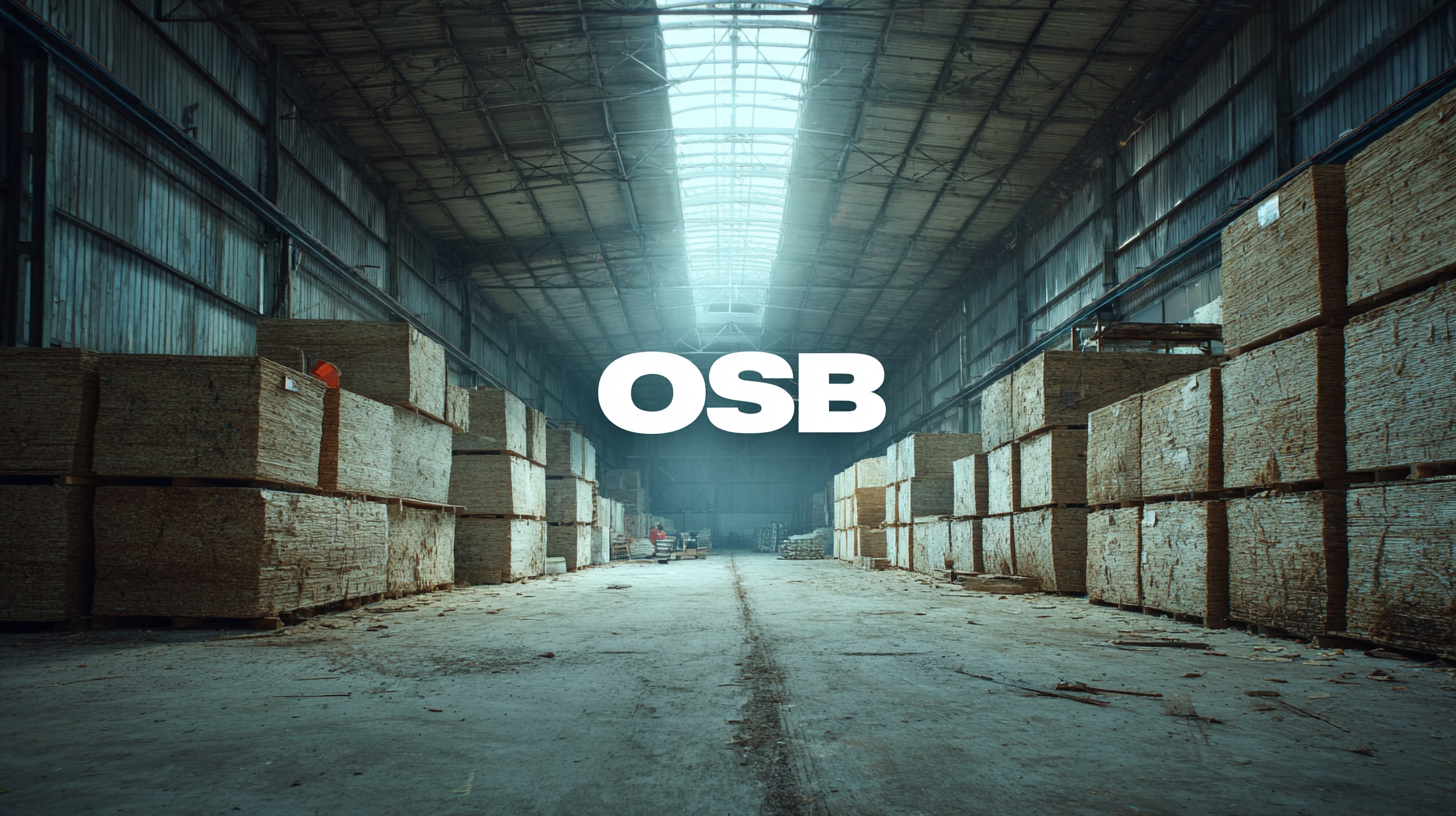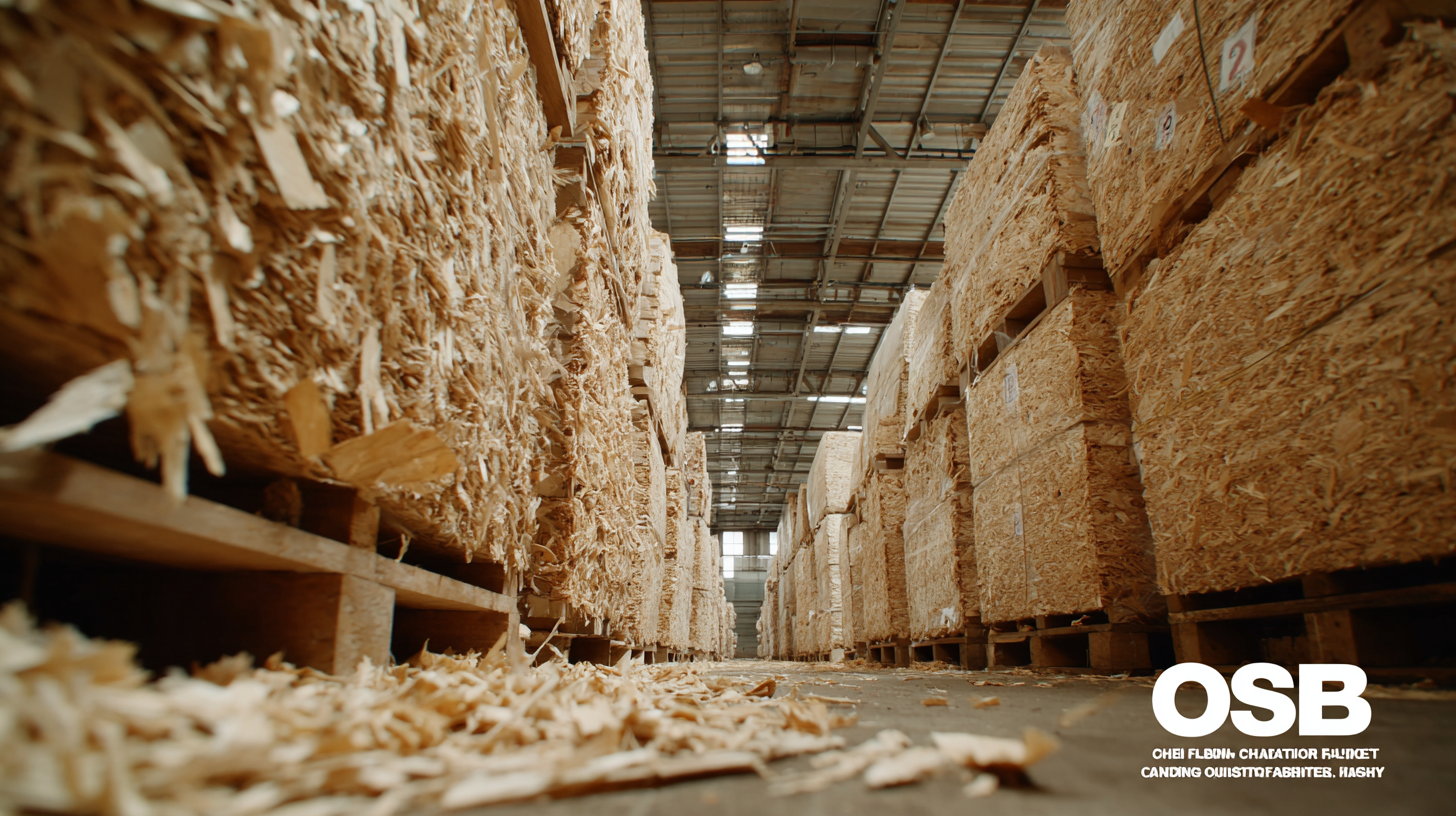The global demand for oriented strand board (OSB) continues to surge, propelled by the booming construction and furniture industries. According to the recent report by MarketsandMarkets, the OSB market is projected to reach USD 17.6 billion by 2025, growing at a CAGR of 5.6% from 2020. This upward trajectory highlights the significant role that high-quality manufacturing plays in meeting the increasing needs of the market.

China, renowned for its robust manufacturing capabilities, stands at the forefront of this industry. A China OSB factory not only provides access to advanced technology and production efficiency but also ensures adherence to stringent industry production standards, which are crucial for maintaining product quality and safety. By leveraging the expertise of Chinese manufacturers, businesses can tap into a reservoir of resources and innovation, ultimately shaping the future of the OSB market.
The evolution of Chinese manufacturing has been nothing short of remarkable, transitioning from local workshops to a global powerhouse that drives the modern economy. In the late 20th century, China was primarily viewed as a destination for low-cost labor and basic manufacturing. However, significant government investments in infrastructure, technology, and education have transformed the landscape, enabling Chinese factories to adopt advanced manufacturing techniques and high-quality production standards. This shift has not only improved operational efficiency but also enhanced the competitiveness of Chinese products on the world stage.
Today, China stands as a crucial player in various industries, including electronics, textiles, and building materials, such as oriented strand board (OSB). The strategic focus on innovation and sustainability has allowed Chinese manufacturers to exceed international benchmarks, making their products desirable across global markets. Companies looking to source OSB can benefit immensely from partnering with leading Chinese manufacturers, who have embraced both quality and environmental responsibility. This evolution illustrates how Chinese manufacturing has become synonymous with reliability and cutting-edge technology, thereby shaping the future of global supply chains and influencing how products are designed and produced worldwide.

Understanding OSB (Oriented Strand Board) is essential for anyone involved in the construction and manufacturing sectors. As a versatile engineered wood product, OSB is known for its structural strength and durability, making it a popular choice for various applications, including flooring, wall sheathing, and roof decking. In recent years, the Chinese manufacturing sector has emerged as a leading producer of high-quality OSB, leveraging advanced technology and strict quality assurance practices to meet international standards.
Quality assurance in Chinese OSB manufacturing encompasses several critical components, including rigorous material selection, meticulous manufacturing processes, and comprehensive testing protocols. Manufacturers prioritize using premium wood strands and adhesives to ensure that their products exhibit consistent performance. Furthermore, many factories adopt ISO certifications and adhere to environmental regulations, which enhances the overall reliability of the product. This commitment to quality enables buyers to trust that they are sourcing OSB from reputable factories that not only meet their needs but also contribute to sustainable construction practices. As a result, leveraging Chinese OSB presents a compelling opportunity for businesses seeking high-quality materials at competitive prices.
| Dimension | Details |
|---|---|
| Production Capacity | 500,000 cubic meters/year |
| Raw Material Source | Sustainable pine and poplar |
| Quality Standards | ISO 9001, EN 300 |
| Product Range | OSB 1, OSB 2, OSB 3, OSB 4 |
| Certifications | CE, CARB Phase 2 |
| Testing Processes | Moisture content, Density, Strength tests |
| Lead Time | 4-6 weeks |
| Shipping Methods | Sea freight, Air freight |
| Customer Support | 24/7 availability, multilingual support |
Chinese manufacturing has emerged as a formidable force in the global market, particularly in the production of oriented strand board (OSB). Several key factors contribute to the exceptional status of Chinese OSB factories, distinguishing them from competitors worldwide.

First, the advanced manufacturing technologies employed by Chinese factories significantly enhance production efficiency. A recent industry report by Smithers Pira indicates that China's OSB production capacities have surged by 15% over the past five years, attributed to investments in automation and streamlined processes. This modernization not only meets domestic demand but also positions China as a key exporter, supplying over 30% of the global OSB market.
Additionally, cost competitiveness plays a crucial role. According to the International Wood Products Association, Chinese OSB manufacturers benefit from lower labor costs and abundant raw materials, resulting in prices that are, on average, 20-30% lower than their Western counterparts. This pricing advantage, coupled with consistent quality control standards, makes Chinese OSB an attractive option for international buyers seeking both value and reliability. The combination of technological advancement and cost-effectiveness solidifies Chinese OSB factories as leaders in the industry.
In the realm of modern manufacturing, sustainability and innovation are not merely buzzwords but essential pillars driving the industry towards a sustainable future. As highlighted in recent discussions, the nexus between environmental pollution and technological innovation plays a pivotal role in achieving sustainable development. China's commitment to transforming its manufacturing practices through initiatives like the Beautiful China 2025 demonstrates how the integration of AI, IoT, and carbon capture technologies can lead to significant advancements in sustainability.
The adoption of sustainable practices within organizations is also increasingly influencing firm performance. Studies show that environmental management practices and supply chain integration can enhance the technological innovation performance of manufacturing firms. This interplay between sustainability and innovation reflects a growing understanding that businesses must align their operational strategies with environmental stewardship. Emphasizing green innovation not only addresses pressing environmental concerns but also positions companies to thrive in a competitive marketplace, paving the way for a new era of eco-conscious manufacturing practices.
Navigating international trade can often feel daunting, especially when looking to access the best-oriented strand board (OSB) factories in China. The first step in this journey is understanding the structure of the Chinese manufacturing landscape. With a plethora of factories ranging from small-scale workshops to large industrial plants, potential buyers must equip themselves with knowledge about which manufacturers meet quality, production capacity, and compliance standards. Exploring reputable trade platforms and industry networks can facilitate better connections, allowing buyers to identify experienced suppliers capable of meeting specific production needs.
Once you have a shortlist of potential OSB factories, it's essential to conduct thorough due diligence. This includes examining each factory’s certifications, production processes, and customer reviews. Engaging with local trade experts or consultants can also provide valuable insights into the cultural and operational nuances of Chinese manufacturing, ensuring smoother negotiations and fostering long-term relationships. Building rapport with manufacturers through regular communication and visits (if feasible) will not only help secure better pricing but also ensure that your specifications are met consistently, ultimately leading to a successful partnership in your OSB sourcing journey.
This chart illustrates the production capacity of various OSB factories in China, showcasing their output in cubic meters per month. It highlights the significant role of Chinese manufacturing in the international OSB market.
